Last Updated on: February 5, 2025
From the White Mountains to southern desserts, The Grand Canyon State has diverse areas that make it a great birding destination. Aside from state parks, you will also find a variety of birds visiting private backyards.
But…
With the hundreds of species flocking the state, bird identification can be challenging, especially if you are a novice. From their plumage to their diet, birds in the state share similar characteristics that can be confusing,
If you need help identifying the birds of Arizona, we got you. This short guide lists some of the feathered creatures in the state.
Physical Characteristics, Habitats, And Diets Of The Birds Of Arizona
1. House Finch
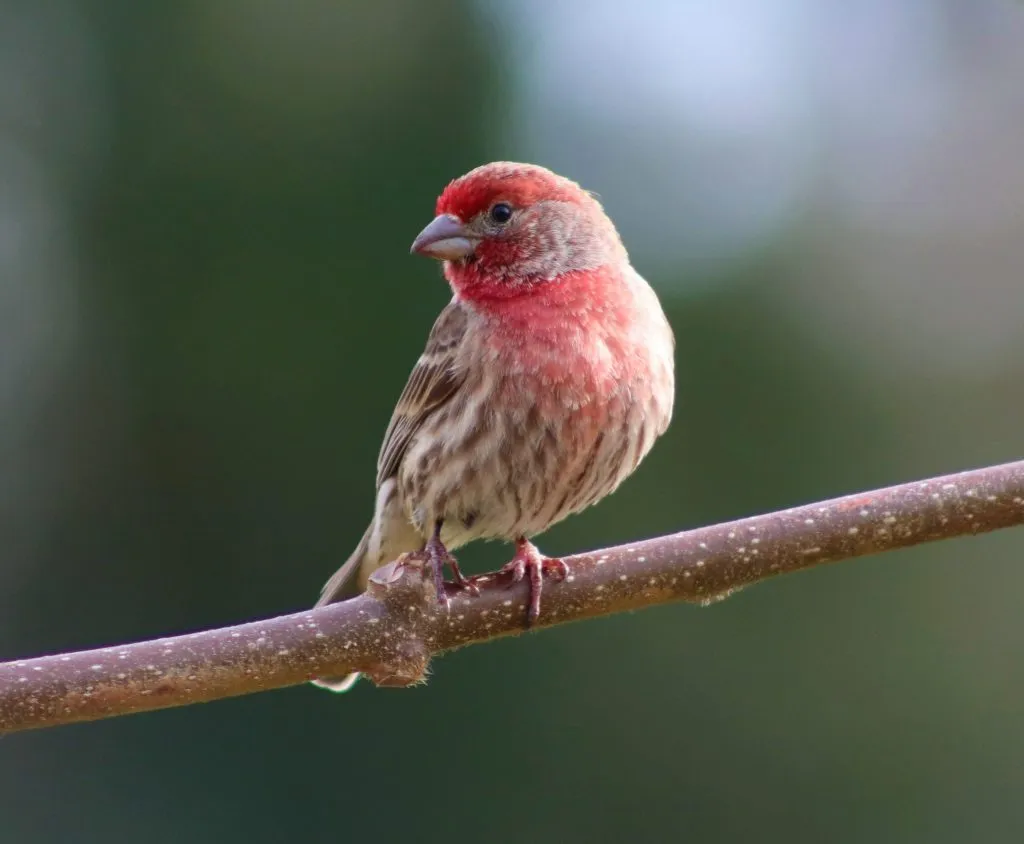
One of the most common backyard birds in the state, the house finch is a small-bodied bird with a large beak and flat head. Males have rosy-red faces and upper breasts with brown streaks in the tail, belly, and back. Meanwhile, female house finches are brownish gray, making them not as commanding as males.
The house finch stays in Arizona throughout the year. You will find it in backyards, farms, parks, and forest edges, among others.
If you want to attract a house finch, you will need bird feeders with black oil sunflower seeds and Nyjer seeds. House finches will often visit in flocks, so do not be surprised if the feeders are emptied in an instant.
2. White-Winged Dove
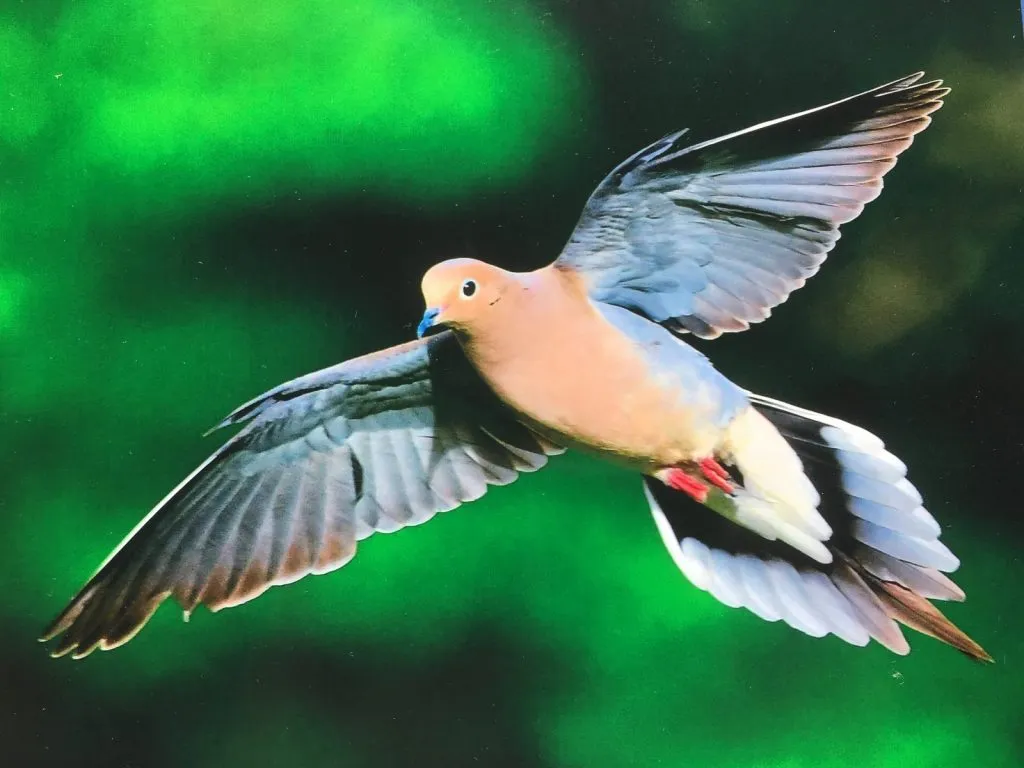
It is very common to see a white-winged dove in Arizona in the breeding season from March to September. However, in the southern part of the state, these birds can remain throughout the year.
White-winged doves have pale gray-brown bodies with a distinctive black line on their cheeks. Meanwhile, when their wings are closed, you will see white edges. Both sexes have a similar appearance.
Is the white-winged dove in your Arizona bird-watching itinerary? Some of the best places to find them are in thorny forests and deserts, although they are also present in suburban areas.
Instead of raiding bird feeders, it is more common to see white-winged doves on the ground looking for food. This is a habit that they share with their cousins, mourning doves.
3. Yellow-Rumped Warbler
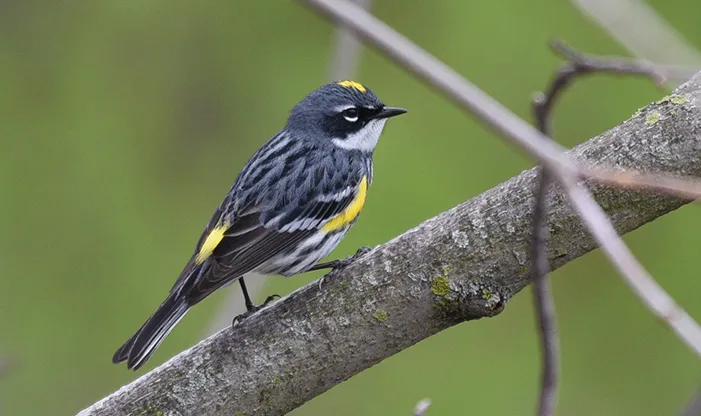
The colors can vary depending on the region. In Arizona, the most common is the Audubon variety. It is bright yellow on the sides, rump, and throat. Males and females have similar patterns, although the latter looks duller.
The best time to see a yellow-rumped warbler in Arizona is in the winter. Check it out in open areas with a variety of fruiting shrubs.
For its diet, the yellow-rumped warbler has a reputation for its sweet tooth, so raisins and suet cakes are great if you want them to visit your backyard.
4. House Sparrow
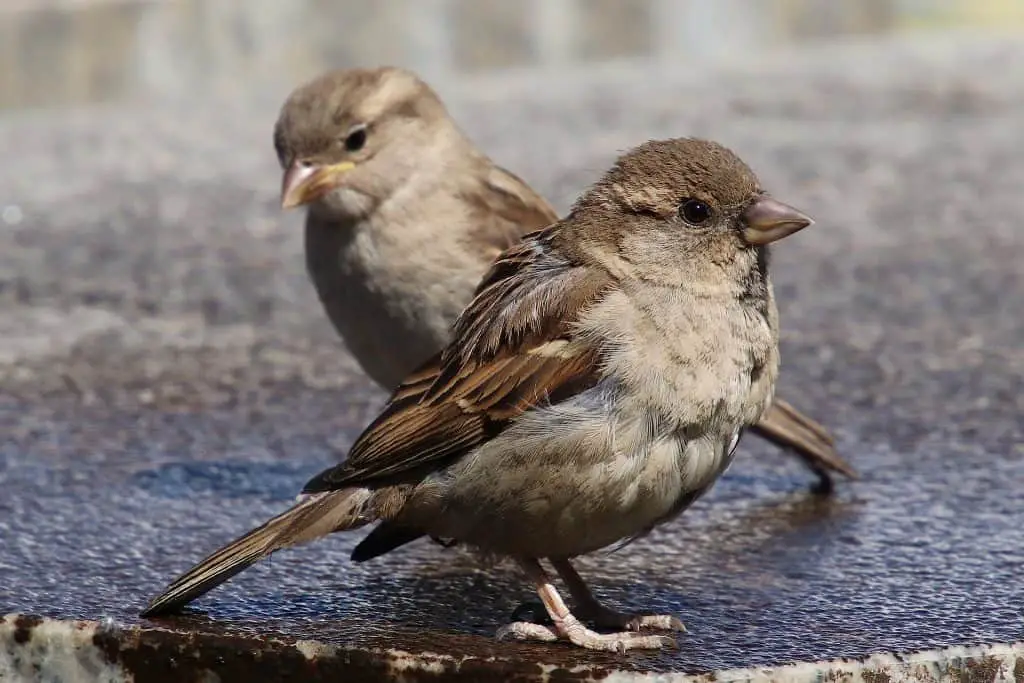
While they are not native to Arizona, house sparrows are now among the most common birds in the state. They are invasive species and will compete with other birds for food and nesting sites, so they are not always welcomed by homeowners.
A male house sparrow has a black bib, white cheeks, and gray crown. Most of the body is brown with black streaks. On the other hand, a female house sparrow is a dull brown with black streaks as well.
Seeds and grains are some of the favorites of house sparrows. They will also eat discarded food on the ground or in trash bins.
5. Mourning Dove
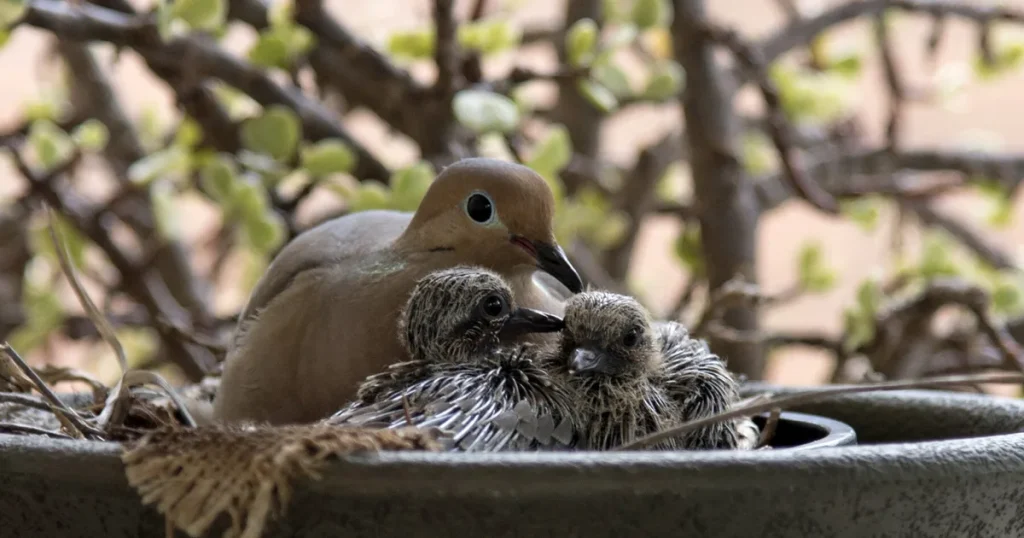
About the same size as a pigeon, mourning doves are some of the most popular backyard birds in Arizona. They can be often seen in a group in trees or perching on utility lines.
The mourning dove is mostly gray throughout the body with prominent black spots. It also has a white eye ring, black bill, and pink legs.
It is usual for a mourning dove to visit backyard feeders with different kinds of seeds. Although, it prefers spending time on the ground collecting fallen seeds.
Mourning doves are year-round residents in The Grand Canyon State. Your best chances of spotting them would be in woodland edges and other open areas.
6. Red-Winged Blackbird
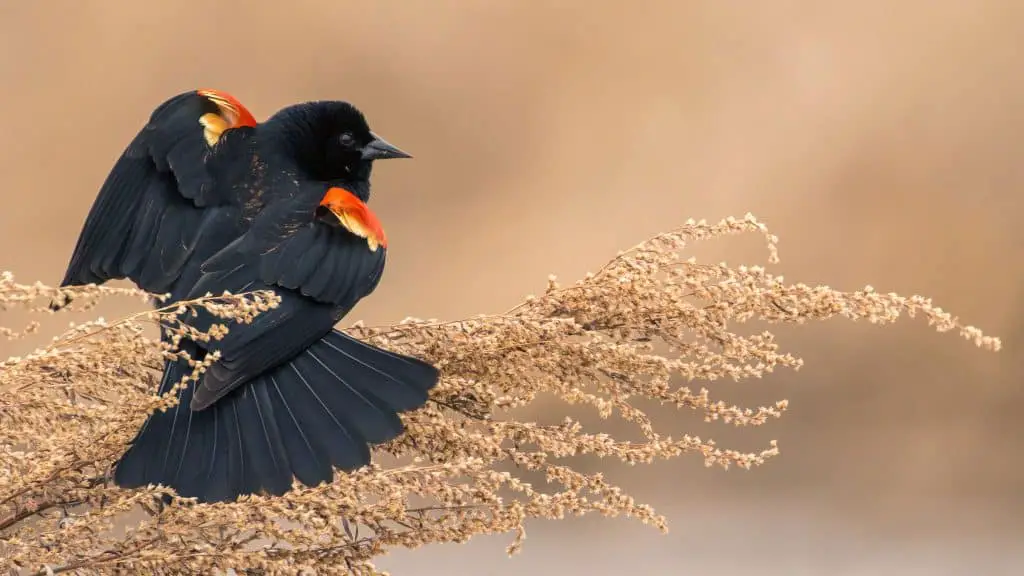
The male red-winged blackbird is a beautiful backyard bird. It has a glossy black body accented by a red patch on the wings with yellow edges, making it stand out. A female red-winged blackbird, on the other hand, is brown on most of the body with heavy streaks.
Red-winged blackbirds stay in Arizona throughout the year. In the breeding season, the best locations for an encounter with these birds are wet areas, such as marshes.
Aside from their looks, red-winged blackbirds are easy to identify because of their musical calls.
7. American Robin
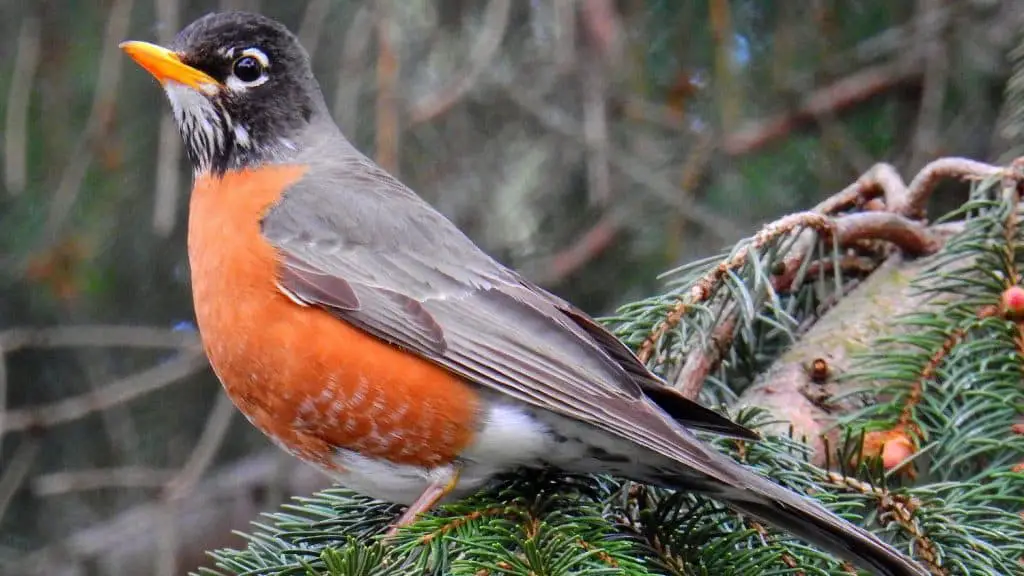
The American robin has a brown body with a dark head and warm orange underparts. When it is flying, you will see a white patch under the tail feathers and on the lower belly.
While American robins are year-round residents, they are more abundant from April to July. You do not need to head far to see them since they spend a lot of time on lawns tugging earthworms off the ground.
In the wild, the habitats of the American robin include forests, fields, mountains, and woodlands.
Aside from earthworms, American robins also eat insects, such as caterpillars and beetles. They also consume snails, spiders, and even small reptiles.
8. Brown-Headed Cowbird
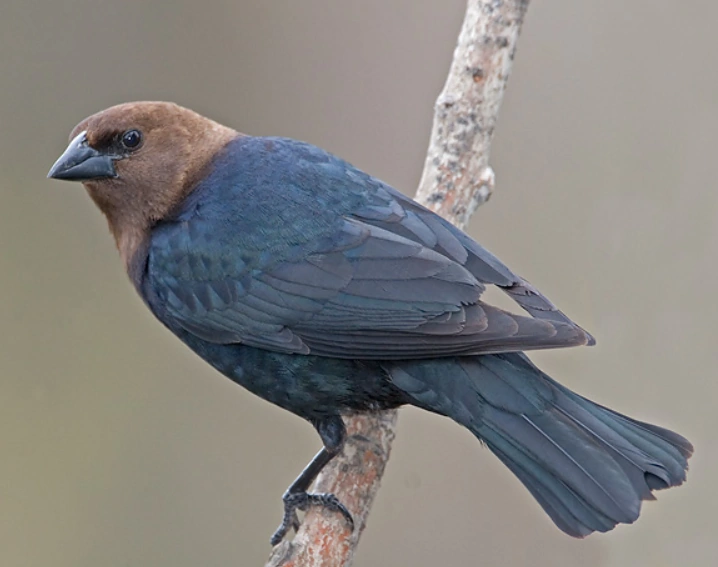
A chunky and stocky blackbird, there is a slight variation in the appearance of these backyard birds of Arizona. Males are black with brown heads. In contrast, females are almost brown throughout.
Summer is the best time to look for brown-headed cowbirds in Arizona. They stay from April to September, although there are also a few of them that can remain year-round.
Curious about where these brown birds got their name? It is from their habit of following cattle herds in search of insects to eat flushed by grazing mammals.
9. Anna’s Hummingbird
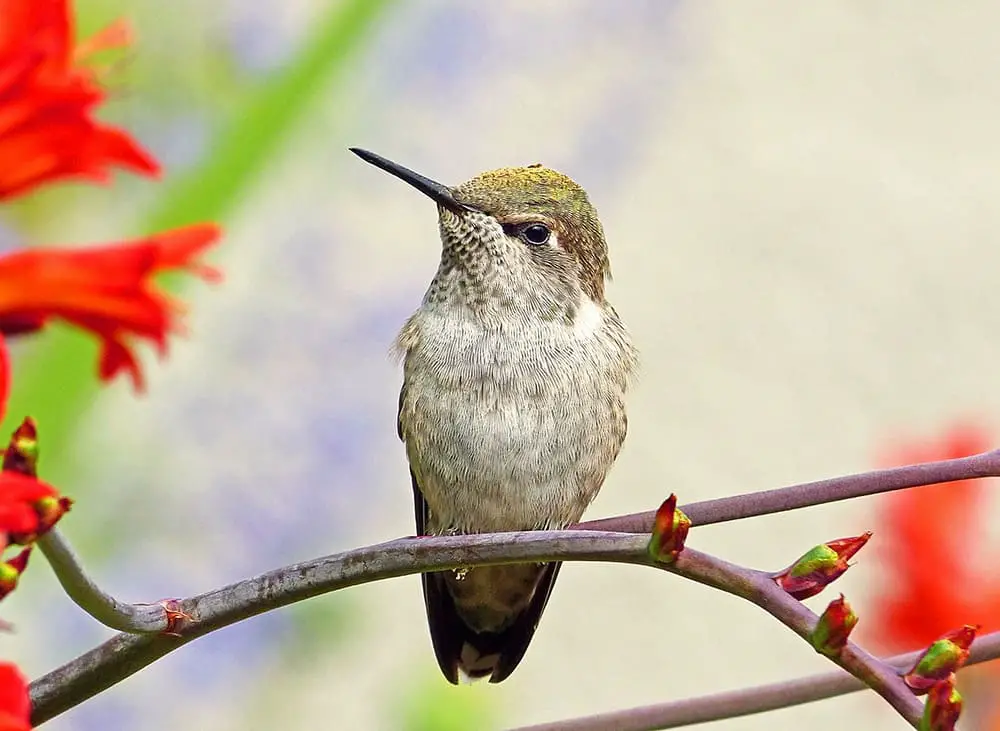
While Anna’s hummingbirds are tiny, they are among the most striking on this list. They are green and gray throughout their bodies. Males have reddish-pink feathers, but they may appear dull in the absence of direct sunlight.
Aside from parks and yards, other places where you can spot Anna’s hummingbirds are coastal scrubs, savannahs, riverside woods, and eucalyptus groves.
Installing hummingbird feeders is a fool-proof way of attracting these birds of Arizona. They can also visit your backyard if you have colorful flowers.
10. Northern Cardinal
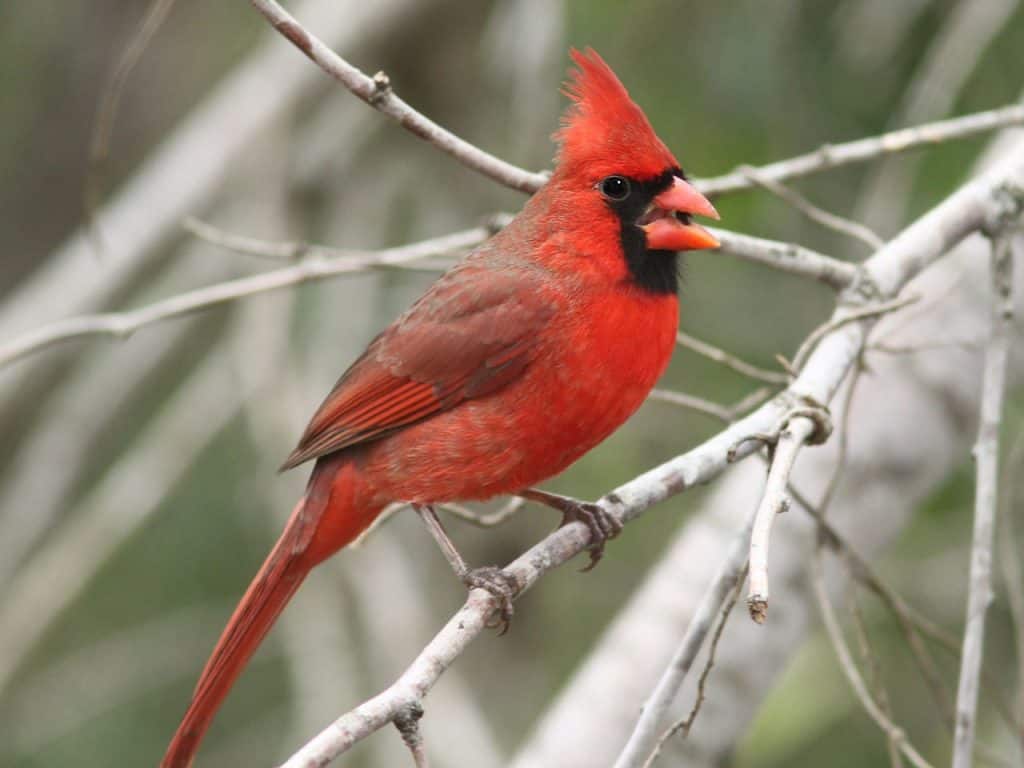
No list of birds of Arizona is complete without mentioning northern cardinals. Males are striking with their bright red plumage and hints of black on their faces. Meanwhile, females are mostly brown with red beaks.
You will see northern cardinals throughout the year in Arizona. The most frequent sightings are in the state’s southern parts.
Add life to your backyard by inviting these birds. Install bird feeders with peanuts, corn, safflower seeds, and sunflower seeds. Having a constant water supply will also lure them.
The clear whistled melodies of the northern cardinal will also help in its easy identification. Unlike other songbirds in the state, even females can sing.
11. White-Breasted Nuthatch
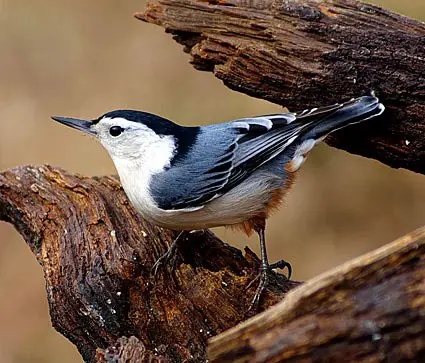
At a length of 5.1 to 5.5 inches, the white-breasted nuthatch is a compact bird. The back of his bird is blue-gray, while the belly and face are white. It also has a black cap.
You do not have to wait before you can see white-breasted nuthatches in Arizona, as they do not migrate. Find them in woodland edges and deciduous forests. They are present even in backyards, especially those with the right feeders.
Nuts and seeds are among the favorites of the white-breasted nuthatch. Your best chances of luring them would be with peanuts, black oil sunflower seeds, and suet. Mealworms will work as well.
12. White-Crowned Sparrow
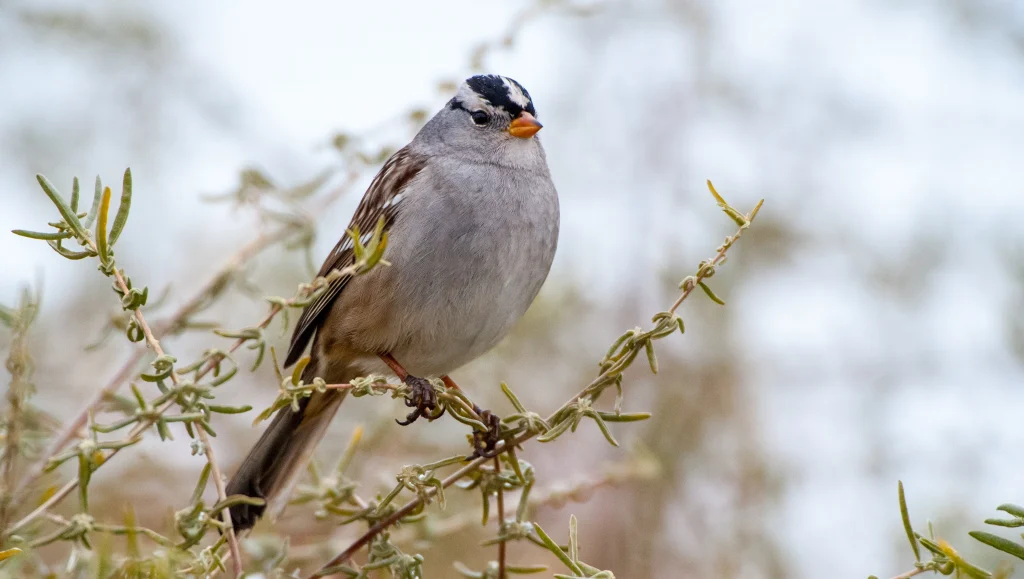
It may be a plain-looking bird, but white-crowned sparrows are beautiful with their black and white striped heads. The bill is yellow or pale pink.
The best time to see these birds in Arizona is from September to May. Most of them stay only in the winter, while there are a few that are present year-round.
Fields and roadsides are some of the most common places where you will see white-crowned sparrows. They are also on trail edges.
13. European Starling
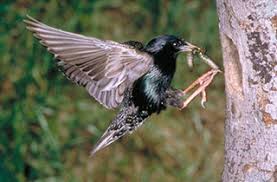
When you see a European starling from afar, you might think it is all black. Look closer, however, and you will see that it has hints of purple, green, and brown. In the winter, it will have white spots.
European starlings were brought to the United States in the 1800s by Shakespeare enthusiasts.
Today, it is a common bird in the country, but many people do not like seeing them.
Being an invasive species, the European starling is a threat to many smaller birds, including woodpeckers, flickers, and bluebirds.
14. Song Sparrow
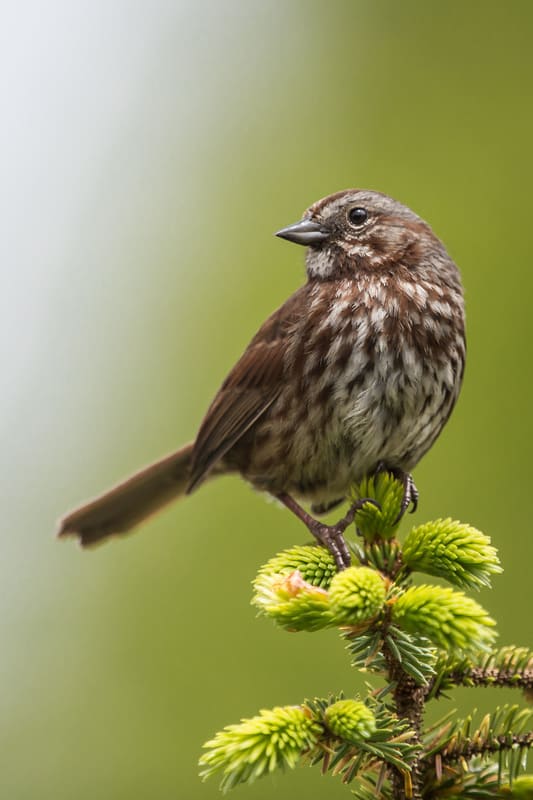
With brown-streaked bodies, song sparrows are not as attractive as the other backyard birds on this list. While it isn’t colorful, they can be a joy to have in the backyard because of their melodious songs.
Song sparrows live in Arizona throughout the year. However, their numbers are highest in the winter.
Are you looking for song sparrows in Arizona? The highest chances of seeing them would be in wet, open, and shrubby areas. You will also see them in backyard bird feeders.
Insects form most of their diet, including midges, caterpillars, and beetles. It also eats spiders and mealworms, as well as vegetable matter from plants like wild cherries, buckwheat, and sunflower.
15. Lesser Goldfinch

Most of the lesser goldfinches in Arizona are spotted in the southern parts of the state throughout the year. However, in the breeding season, they stay mostly in the south.
At a length of only 3.5 to 4.3 inches, the lesser goldfinch is a tiny bird. Despite such, it is remarkable and noticeable because of its bright yellow body. It also has hints of black. Females are often duller.
Open habitats are preferred by these birds of Arizona. They are often seen in forest clearings, weedy fields, and thickets.
Lesser goldfinches forage seeds from sunflower, as well buds and fruits from elderberry, sycamores, alders, and willows.
16. Dark-Eyed Junco
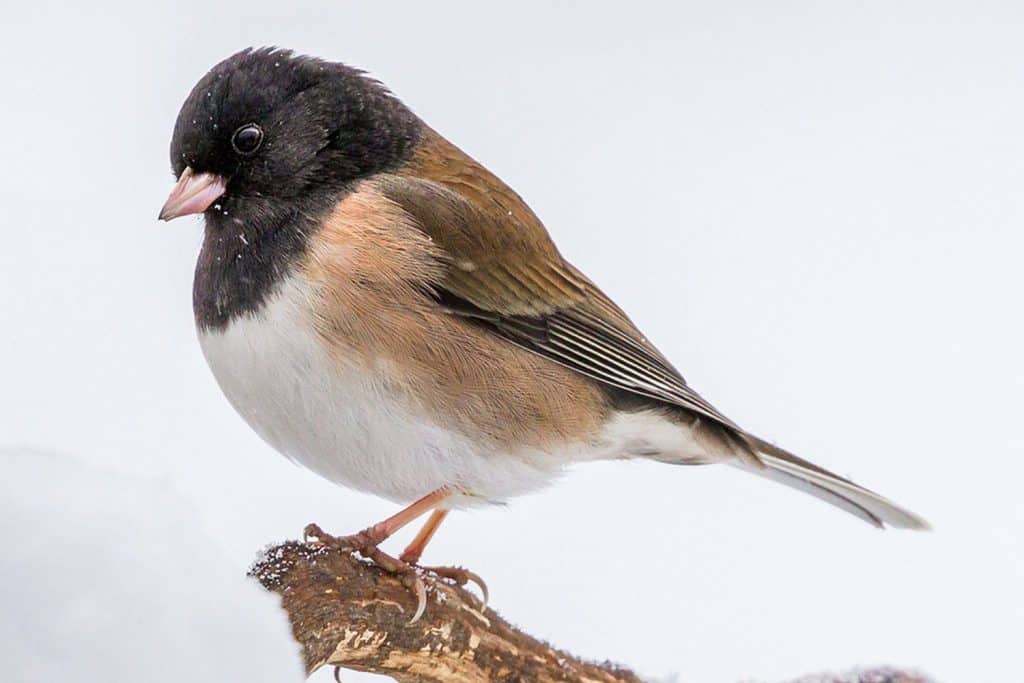
There are regional differences in the physical features of dark-eyed juncos. Those that you will see in Arizona, however, are dark brown or gray. The bill is pink and the outer tail feathers are white.
Fancy seeing a dark-eyed junco? Try walking in open and partially wooded areas. Keep your heads low since they like staying on the ground, hopping on the bases of shrubs and trees.
Dark-eyed juncos earned the moniker snowbirds. The latter is because they often arrive in time for the winter.
17. Gila Woodpecker

Male and female Gila woodpeckers have zebra stripes at the back, white wing patches, and brown faces. However, only males have red caps.
While you can see Gila woodpeckers year-round in Arizona, they are mostly in the southern parts of the state. They are more common in the winter than in the summer.
Their natural habitats include cactus stands in deserts. Nonetheless, they can also visit backyards, especially when you have platform and suet feeders.
18. Gambel’s Quail
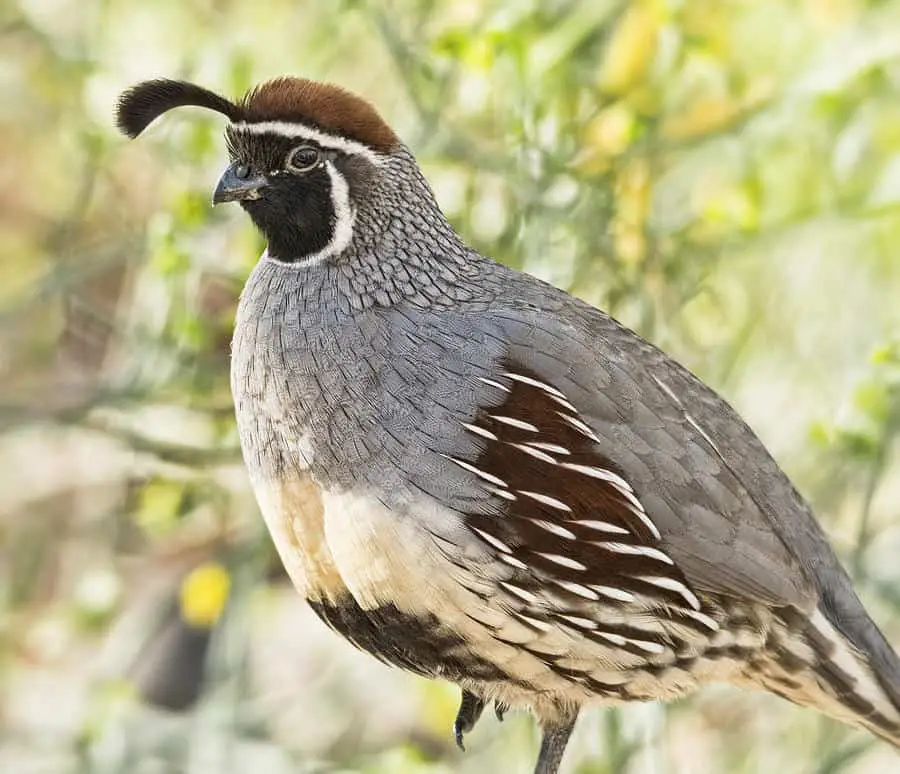
The Gambel’s quail is not as popular as the other birds on this list. With some luck, you can find them on town edges. They are more common in the desert, especially in south-central, western, and southern Arizona.
As is common with quails, this bird has a plump body. It has broad and short wings, a short neck, and a square tail. Their bodies are a mix of cream, chestnut, and gray. Males are more vibrant, especially with their bright head patterns.
Gambel’s quails are elusive. Your best chances of encountering these birds are early mornings or late afternoons. They are most active when the temperature is moderate.
19. Eurasian Collared Dove
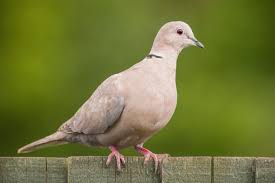
The Eurasian collared dove is non-native to North America. It is from Europe and Asia. It is believed that they escaped a Bahamas pet shop in the 1970s and found their way to Florida. Since then, their population has increased, and they are now in many parts of the country, including Arizona.
A plump bird with a small head, the Eurasian collared dove is gray to light brown. The tail has white patches while the narrow collar is black. When it is perched, the tips of the wings are darker than the other parts.
They do not migrate, so you can see Eurasian collared doves throughout the year in Arizona.
20. Northern Flicker
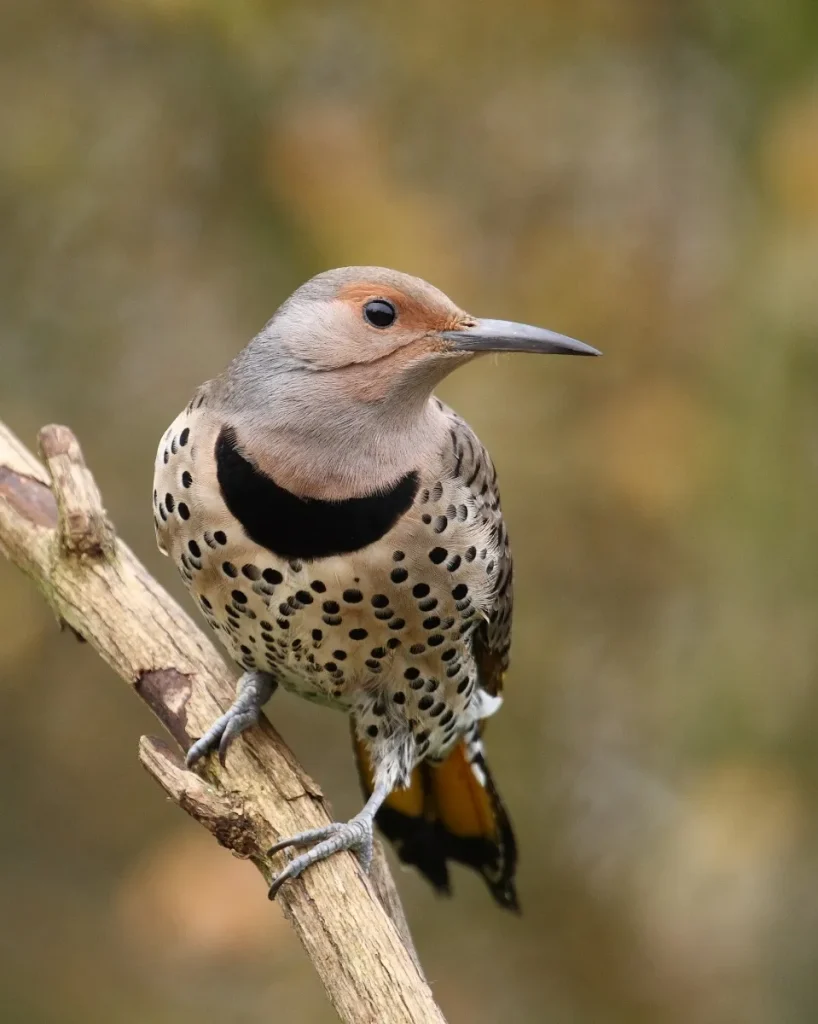
If the northern flicker is in your Arizona birding itinerary, consider yourself lucky since you can find them in the state regardless of the season. Although, if you are in the state’s southwestern corner, they will show up only in the winter.
The colors of northern flickers vary by region. In Arizona, the most abundant is the red-shafted variety. They have vibrant red feathers under the wings and tail.
21. Pine Siskin
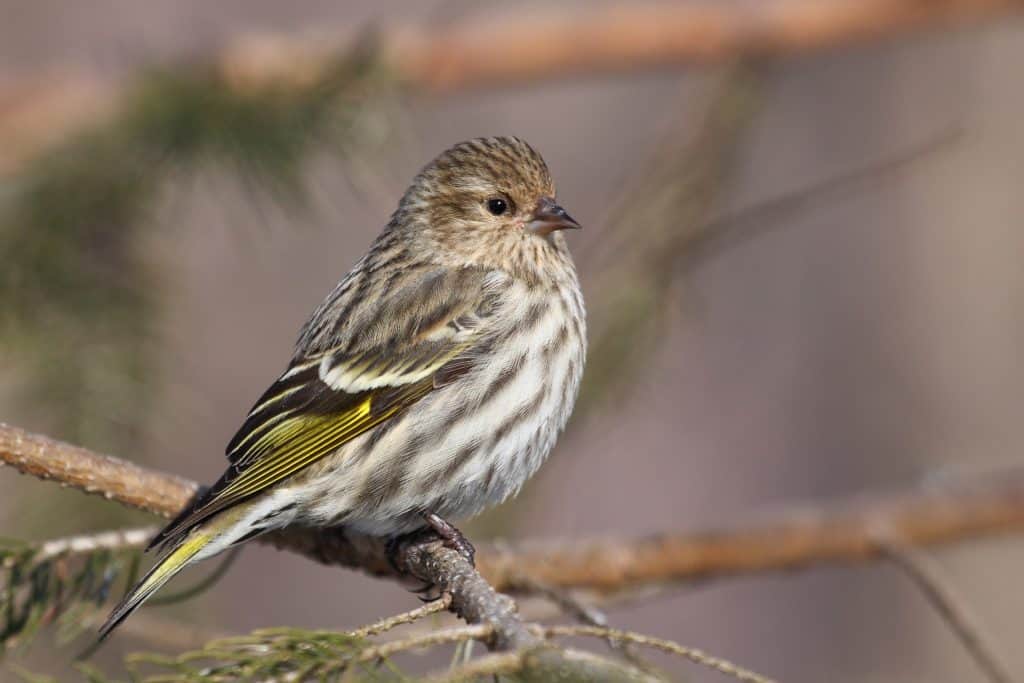
Since it is a very small songbird, identifying a pine siskin can be difficult, especially if you are at a distance. When you look closely, you will see that it is a streaky brown bird with yellow edges on the tails and wings.
If you want to attract these birds of Arizona to your backyard, install bird feeders with Nyjer and thistle seeds.
In most parts of the state, pine siskins stay throughout the year. However, if you are from the southeast, you will most likely find them only in the winter.
22. Ruby-Crowned Kinglet
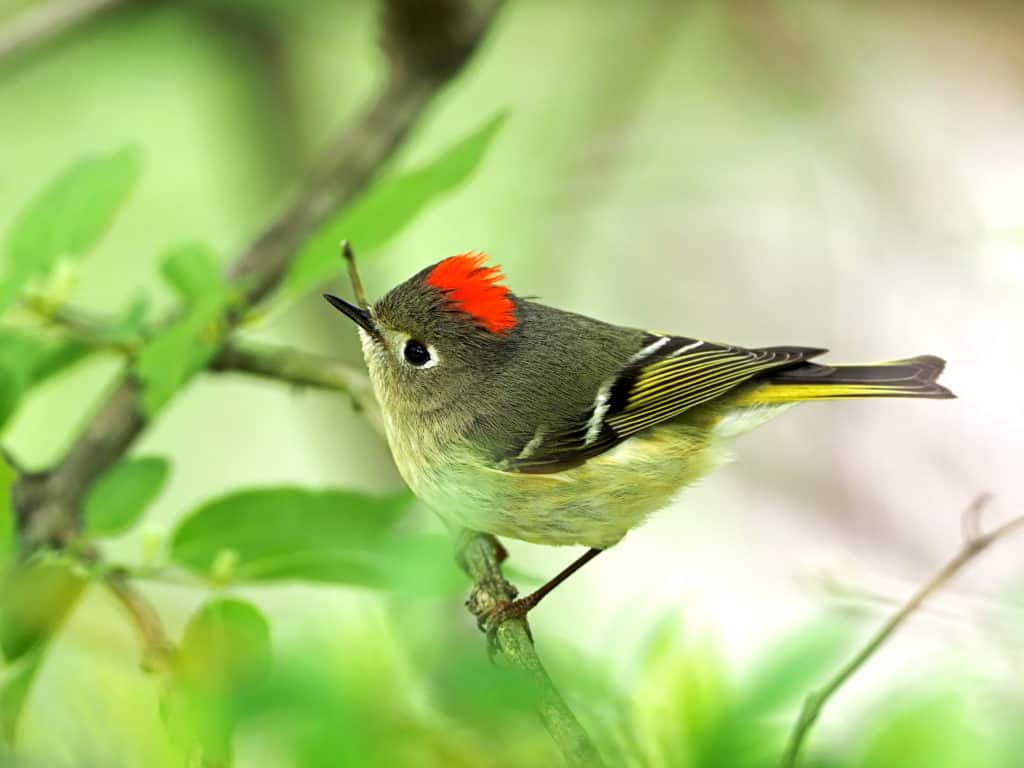
The defining feature of these bird species in Arizona is the ruby stripe on the top of its head, but it is too small to be noticeable from afar. This is found only in males. It is olive-green throughout the body.
Those who would like an up-close encounter with ruby-crowned kinglets should look for them from October to May. They are in Arizona only during the winter.
It is possible to attract ruby-crowned kinglets to backyards when you have bird feeders with mealworms, peanut hearts, and hulled sunflower seeds.
23. Northern Mockingbird
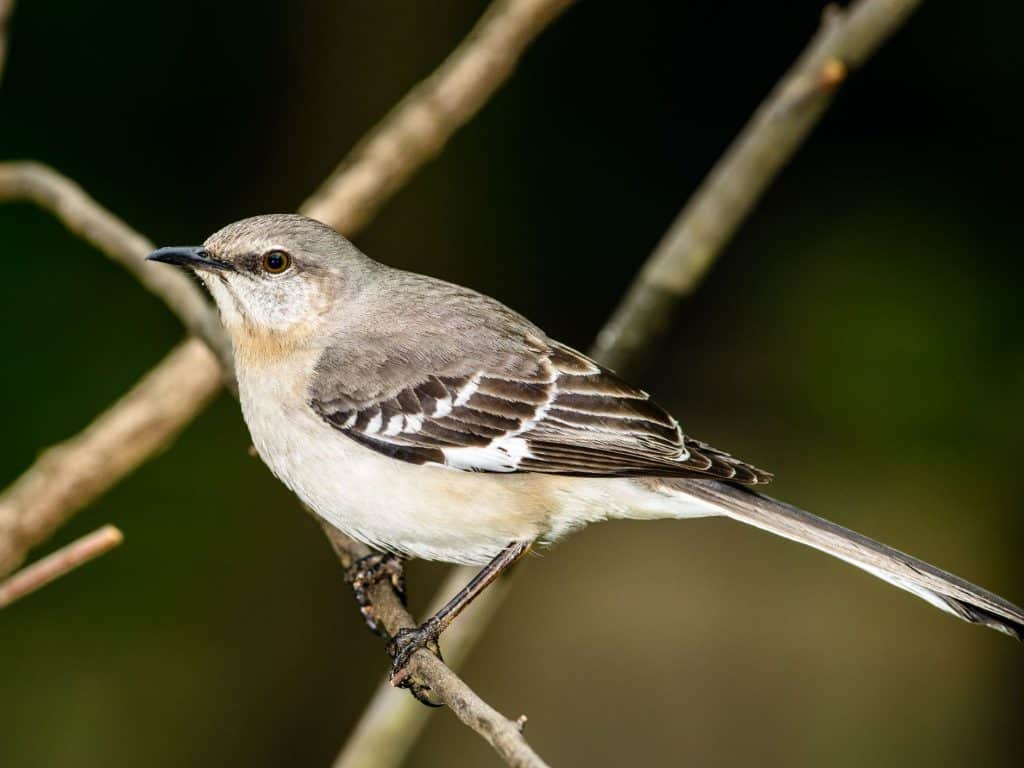
Most of the body of the northern mockingbird is a soft gray. The undersides are slightly duller compared to the back. When flying, its two white wing bars are highly visible.
They are non-migratory, so you can find them in Arizona throughout the year. They often fly alone or with a mate.
The northern mockingbird can imitate the calls of other birds. In its lifetime, it can learn more than 200 songs.
Watch This!
Frequently Asked Questions
How many species of birds are there in Arizona?
According to the Arizona Game and Fish Department, the state is home to 534 bird species. Out of which, 480 are non-game species. Meanwhile, more than 300 species have been documented to be breeding in Arizona.
What is the state bird of Arizona?
The state bird of Arizona is the cactus wren, which was officially designated through legislation passed in 1931. You will find them only in the desert. At an average length of seven to nine inches, the cactus wren is the largest in North America.
Conclusion
Arizona is home to hundreds of birds, including year-round residents and migratory species. From state parks to private backyards, feathered creatures are almost everywhere. With the right approach, you can invite them to your gardens, such as by installing bird feeders and bird baths.
Are there other birds in Arizona that we should know of? Share them with us in the comments!

